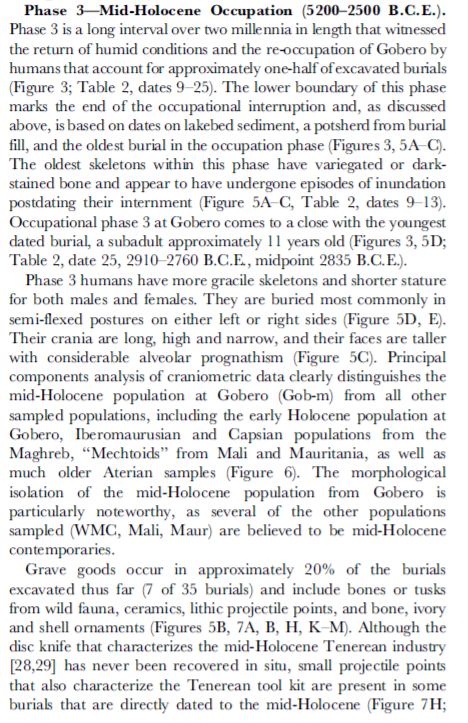Sedentary hunter-fishers lived at Gobero paleolake of central Niger 7700-6200 BC. The lake dried up 6200-5200 BC and the area was abandoned. A different group settled the area 5200-2500 BC that practiced animal herding as well as fishing after the lake filled formed again. 



Gobero paleolake was dry 14000-7700 BC with only occasional human visitation. 7700 BC Gobero Lake filled up & surrounding desert turned into a savanna that lasted until 6200 BC. Local culture was similar to Kiffians, and skulls were similar to Iberomaurusians & Capsians. 







The original inhabitants of Gobero paleolake were almost 2 m tall. Endurance hunting requires long legs.
Cooling events in north Atlantic coincided with a dry period in central Sahara, which dried up the Gobero paleolake around 6200 BC. The region was abandoned, and not resettled for another 1000 years. 

Humid conditions returned to Sahara 5200-2500 BC. A new group settled the area, morphologically distinctive from their predecessors & northern & western neighbors. Their culture is possibly Tenerean. No long distance trade, and agriculture & cattle herding were minimal. 





Cattle remains were found in Gobero only after 4000 BC - another author associates introduction of cattle to E Sahara with the Chadic-speaking Leiterband Culture 
https://twitter.com/Peter_Nimitz/status/1345966186278752256

Sahara desertified again 2500-300 BC and the Gobero paleolake was again abandoned. Occasionally nomadic cattle herders (Chadics? Berbers? Nilo-Saharans?) would pass through. 



• • •
Missing some Tweet in this thread? You can try to
force a refresh







































